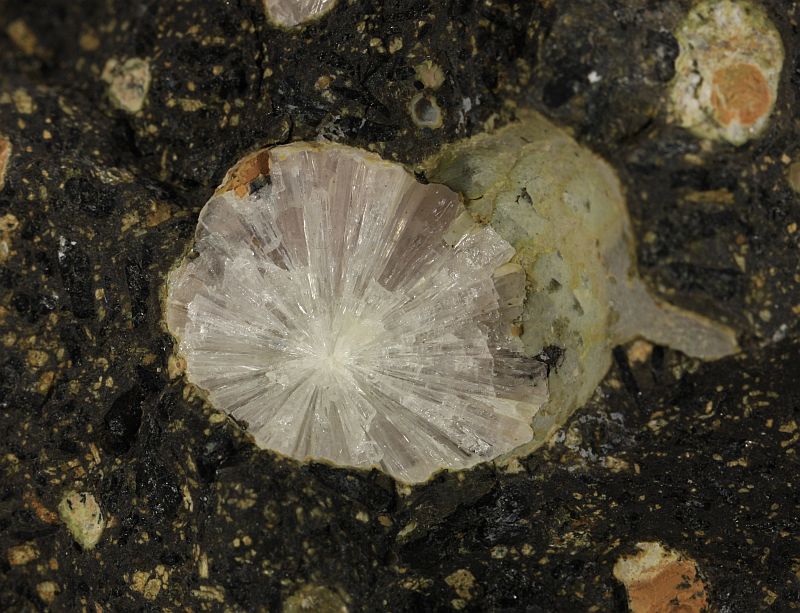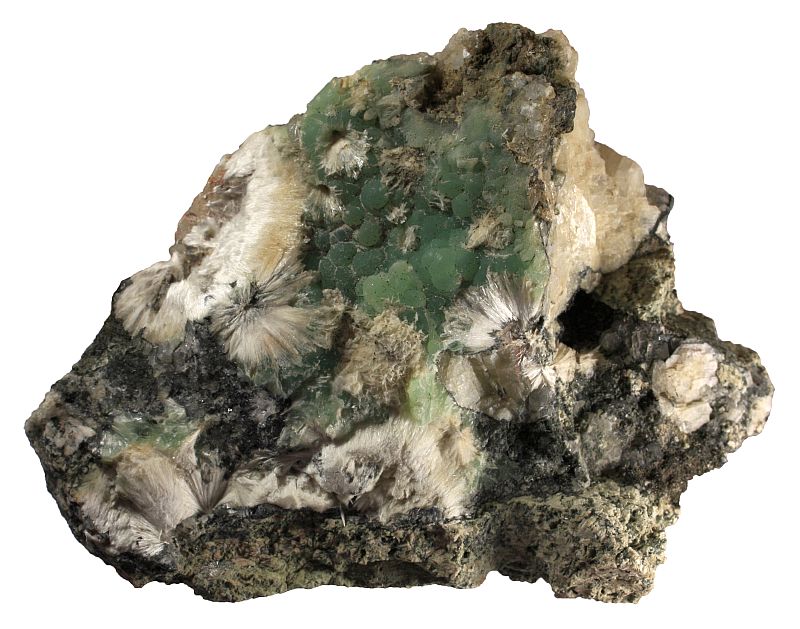Natrolite is a zeolite group mineral. Zeolites are minerals that are structurally somewhat similar to feldspars (they all have three-dimensional framework of silica tetrahedra) but their structure is much more open. Zeolites were once considered to be of minor importance because most zeolites are very fine-grained but X-ray studies in the last 50 years have revealed that zeolites are actually very common minerals in some sedimentary and metamorphic environments and form the largest single group of silicate minerals.

Natrolite in limburgite from Kaiserstuhl, Germany. The width of the crystal aggregate is 21 mm.
Zeolite group contains over 80 minerals. In addition to that there are more than 600 synthetic minerals which we haven’t found in nature. Obviously, there must be a good reason to make so many synthetic minerals and there is. The open structure of zeolites makes them ideal molecular sieves (they trap certain molecules which fit into the void). These voids are normally filled with water but water can be easily driven out by heating the material. Hence, zeolites can be used several times as a desiccant for example. Zeolites can be tailor-made for specific purposes like removing heavy metals from mine waste or cleaning up radioactively contaminated areas. Some zeolites are even useful in medicine as a blood-clotting agent (useful in battles or disaster areas). One zeolite mineral, erionite, may pose some risk to human health. Long term exposure to erionite fibers may cause similar lung pathologies as asbestos minerals do.
Most zeolites are too fine-grained to be identified without X-ray analysis but there are exceptions. Natrolite is probably the best-known zeolite because it forms beautiful white radiating crystals in the vesicles of mafic volcanic rocks. Other zeolite minerals that sometimes form large crystals are heulandite, chabazite, analcime, thomsonite, and stilbite. Analcime is sometimes treated separately from other zeolites because it may be considered to be one of the feldspathoids. Zeolites are usually either white or pastel shades of other colors.
http://picasaweb.google.com/107509377372007544953/Rocks#5805071013102344882
Natrolite in an alkaline volcanic rock. The sample demonstrates both the outer form and the internal structure of the aggregate of natrolite. The sample is from the Czech Republic. Width of view 8 cm.

Natrolite (white) and prehnite (green). Prehnite is not a zeolite group mineral. Width of sample 12 cm.
Leave a Reply